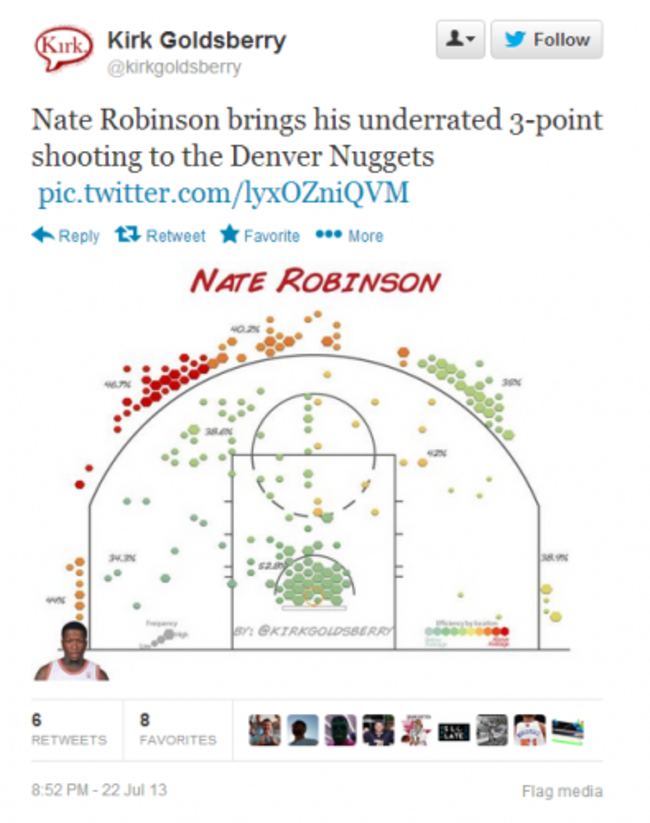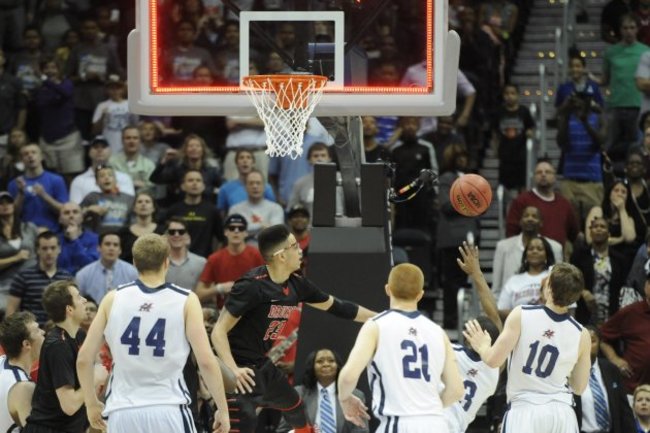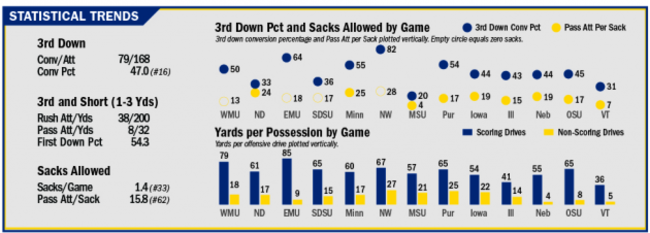
- Australia's largest state hits record-high COVID-19 cases despite weeks of strict lockdown. 'It's a tinderbox ready to explode,' one official said.
- eToro says crypto made up 73% of trading commissions in the last quarter, as retail customers dived in
- A flight attendant says she was too exhausted to report a passenger who shoved her when a flight was overbooked: report
- US jobless claims climb for first time in 5 weeks, to 353,000
THE NEW YORK Times’ renowned statistician Nate Silver is moving his blog to ESPN.
This is a good thing for anyone who likes to read about sports.
But Silver comes into a sports writing field that’s already stacked with statistics-minded people. In politics, his adherence to math and modeling made him an exceptional figure. That won’t be the case at ESPN when he chooses to write about sports.
Here are a handful of writers who are doing some Silver-type sports writing already.
We excluded baseball writers because all baseball writing is stats-based now:
1. Kirk Goldsberry (NBA, Grantland). He’s a “visiting scholar” at Harvard and does a lot of cool data visualization stuff with basketball shot charts — showing where players take most of their shots, and how efficient they are from different areas on the court.
His extensive shot charting leads to interesting and specific revelations like, say, Martell Webster is insanely good from the right corner.
Or Nate Robinson is more efficient than you’d think:
2. Kevin Pelton (NBA, Pro Basketball Prospectus and ESPN). He took over at ESPN for John Hollinger — who invented ESPN’s influential PER stat — after the Grizzlies poached him. Pelton co-wrote the 2012-13 Pro Basketball Prospectus, which included win-loss projections for every team and player based on past performance and historical anecdotes.
Sports are notoriously hard to predict — and Silver actually has a spotty track record when trying to predict sports — but Pelton seeks to do just that.
He also writes more general articles about NBA stats, like last week when he looked at which statistics historically translate from Summer League to the NBA.
3. Ken Pomeroy (College basketball, KenPom.com). He has an advanced stats-based college basketball ranking system that is incredibly influential among college basketball fans and commentators.
College sports rankings are plagued by subjectivity. When you compare the KenPom rating to the traditional polls, you get a picture of which teams are overvalued and undervalued by humans.
He also has a blog where he runs the stats on questions like: Should teams foul up three at the end of games? Are two-for-ones at the end of halves always a good idea?
John Amis/AP/Press Association Images
4. Aaron Schatz (NFL, Football Outsiders). Schatz has combined game charting, predictive models, and an advanced stats rating system to form the best NFL statistics resource around with Football Outsiders.
His DVOA rating calculates a team’s efficiency relative to the league average, and it’s an invaluable resource for comparing teams and match-ups.
His site also charts really specific plays and produces original stats that you simply don’t get anywhere else (like everything in this worst cornerback rating).
Football Outsiders also has a paid service where it predicts results against the spread.
Credit: Brian Fremau.
5. Brian Fremeau (College football, BCF Toys and Football Outsiders). He does some data visualization, but he also does weekly game predictions that will remind people of what Silver did in election years at the NYT.
Using his own index he calculates the percentage chance a team has to win the game, and the expected score minus garbage time possessions.
At Football Outsiders he’s a part of the team that maintains F/+, which is an alternative advanced stats ratings system similar to when KenPom does in basketball.














That might just be a cover for his loss of form